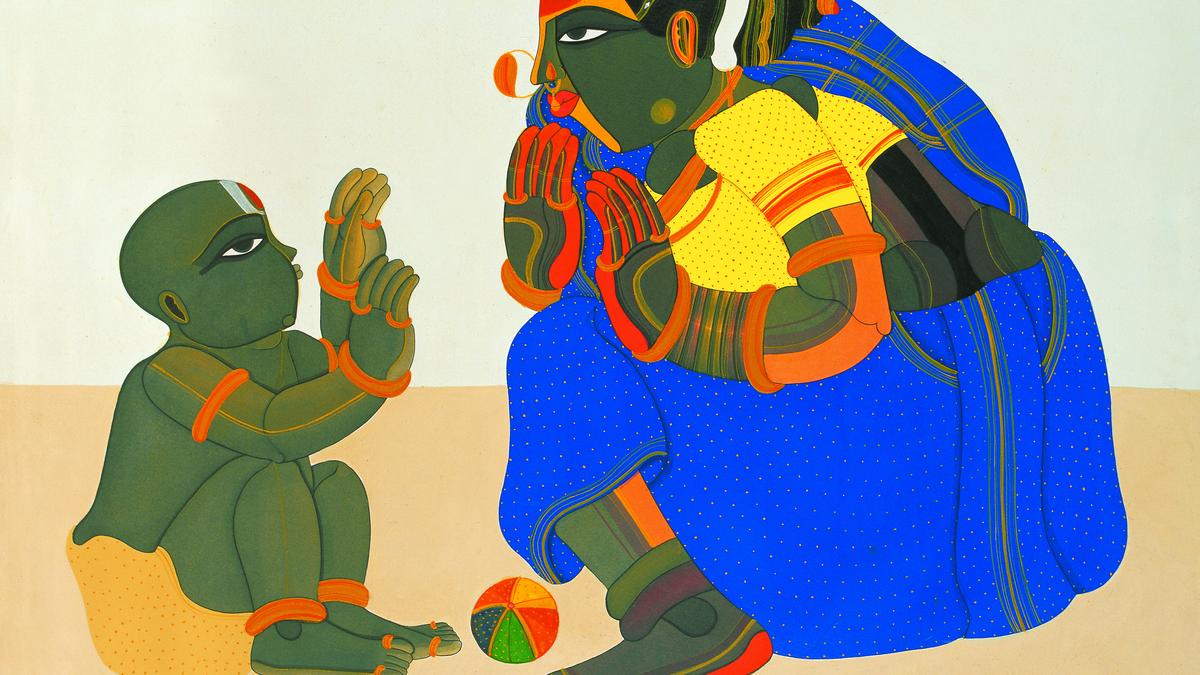
Tapestry of folk culture at Thota Vaikuntam solo show in Delhi
The Hindu
Thota Vaikuntam's journey from rural Telangana to global acclaim showcased in Redefining the Cultural Gaze exhibition in Art Alive Gallery, Delhi.
From humble beginnings in the small village of Burugupalli in undivided Andhra Pradesh (now in Telangana) to becoming one of the most prominent artists in the Indian subcontinent, Thota Vaikuntam’s journey with art is rooted in Indian aesthetics.
His latest solo exhibition, Redefining the Cultural Gaze, spread across two floors at Art Alive Gallery, Delhi, showcases 70 artworks spanning his extensive oeuvre from the 1980s to 2024. It examines the vibrant culture of Telangana through theatrically posed large iconic forms that he brings to a contemporary global audience.
Vaikuntam began his artistic career working with charcoal and conté on paper. One of his college teachers showed him the potential of the medium. “With a small piece of charcoal, you can create an entire world with different layers, making it truly unique. The flexibility of the medium allows you to wipe and modify the image. The tonal value of charcoal is exceptional, and one can try numerous variations,” says Vaikuntam.
He transitioned to vibrant acrylics on canvas, beginning with small formats focusing mainly on the women of Telangana, a subject that intrigued him. He moved to using quarter sheets, applying multiple washes and then progressed to half sheets, where he started painting after multiple sessions of practice. “As part of my artistic process, I used to draw with charcoal and eventually developed the images. After some time, I started to work on larger canvases and depict my inner world, which is filled with memories and visions of my people, village and its everyday spectacles,” he says.
The rural life of his native Telangana is Vaikuntam’s prime inspiration. It started while he was studying under KG Subramanyan, who encouraged him to look at his roots. “I didn’t have much money to travel far. So, I visited my village creating numerous drawings of the area,” he recalls. The artist also studied people from neighbouring places with diverse cultural backgrounds, observing their lifestyles but later focused on capturing the colours of his village folks, the dynamic yellows, reds and greens.
Vaikuntam delved into studying the intricate jewellery, hairdos and vibrant attire of the women in his community, aiming to capture their innate power, strength and nurturing quality. He depicts his Telangana women with both charm and sensuality.
Mother and Child, a celebration of the nurturing spirit of women in the rural Indian context, has a mother looking at her child with an adoring gaze. His inspiration was his mother who played a strong role in shaping his perspective towards women. The composition is rendered in Vaikuntam’s signature style with the figures seated in a typical posture of villagers, folded knees in an upright position.













